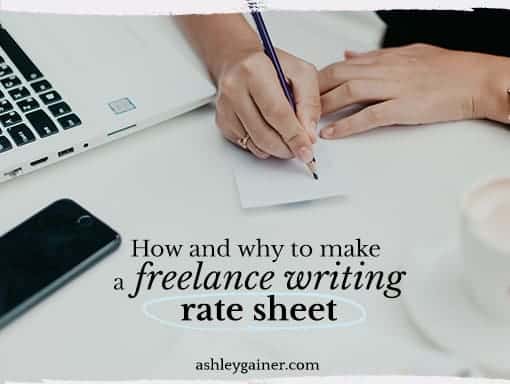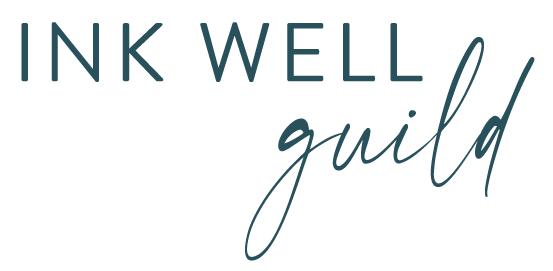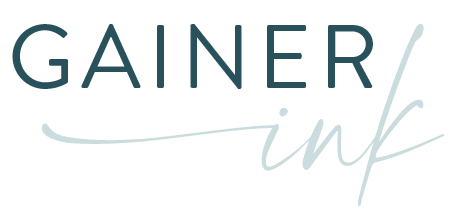Your writing rates are possibly one of the biggest decisions you’ll have to make as a freelance writer. This decision alone can set the course for your business, good or bad. One of the best tools I know of to help you set — and stick to — your rates is the rate guide.
In this post, I’ll tell you what a freelance writing rate guide is, what to put in it, and how to use it. I’ll also get into whether or not to post your rates on your website and the best ways to handle inquiries about what you charge.
What Is a Rate Sheet?
A rate sheet, or rate guide, is simply a list of how much you charge for the things you write. This comes in handy when you’re on client calls, especially if you’re a new writer, or if you don’t have a niche. You can reference it so you don’t have to “umm” and “aah” your way through the call, but instead sound sure and confident of your value.
So if you don’t already have a rate sheet, today is the day to start yours!
What Should You Put On Your Rate Sheet?
Your rates, of course! But seriously, you can break your rates down in a variety of different ways. You can charge per word, per hour, or a flat fee per project. I highly recommend that you charge the flat fee per project rate, but that may not always be possible, especially when you’re first starting out.
If you charge a per-word rate, make sure that you’re clear on whether you’re charging per word submitted or per word published, if not specified. I don’t love the per-word rate, because it seems so nit-picky.
I loathe hourly rates, unless it’s for editing. It’s too hard to quantify hourly rates for writing. The time you spend on a writing project can vary wildly, depending on the subject matter, amount of research you need to do, even your gol-darn typing speed. Plus, an hourly rate punishes you for efficiency!
Besides your rates, put every writing service you currently offer and everything you think you will offer on your rate sheet.
You refer to this when it’s time to calculate rates or send proposals to clients.
Reframe Your Target Hourly Rate (You Run a Business)
If your goal is pricing by project with a flat rate, how do you figure out what to charge?
The question to ask yourself is what is the minimum effective hourly rate you want to make?
My target as a new writer was $50 an hour. People freak out when I say that because I came from the world of nonprofit admin work, where $17.50 an hour was pretty good money. Going from $17.50 an hour to $50 felt like a massive jump. It was hard for me to justify in my own head.
But here’s some justification.
When you’re an employee, your boss or the company has to:
- provide your equipment and office space
- pay a portion of the taxes that come out of your salary
- cover the cost of a payroll service
- pay for people to vacuum and water the plants
- pay the power, internet, and phone bills
As a freelancer, you have to pay for all that stuff! And it ain’t cheap, either.
Your “cost of doing business” is higher as a freelancer than if you were an employee. Therefore you have to charge more as a freelancer, because you’re carrying the overhead. BUT… and this is important… it’s okay to charge more because it is in your client’s benefit. Your client does not have to pay for a full staff of marketing copywriters. They can just outsource to you.
They don’t have to pay your benefits, provide larger office space, etc. So the good clients are willing to pay you these higher rates. They might pay someone on staff $30 an hour. They will pay you $50 an hour so that they don’t have to carry all that overhead. It works out in their favor, in a sense. (The key is to make sure it also works in YOUR favor.)
Reframe how you view your rates, especially if you come from the world of employment.
As a beginner-ish, maybe advanced to beginner-ish freelance writer, aim for an absolute bare minimum of $50 an hour, because your business is expensive. Probably more expensive than you realize right now.
How to Price Your Flat Rate (Blog Posts)
So now that you’re cool with charging what you need to operate your business, let’s get back to pricing.
As a beginner, you should charge 10 cents per word, absolute minimum, just-to-keep-the-lights-on rate, but not for long term. You can use that as a starting point, and go up from there.
Let’s use blog posts as an example for an entry on your rate sheet.
Put the heading “Blog Posts” and then your rate for 400 to 600 words. If you’re charging 10 cents a word, your range would be $40 to $60, but I recommend that you pick one price.
So, you would put “for blog posts ranging from 400 to 600 words, I charge $50” which is a pretty standard fee for a beginner blog post writer. Maybe you go up to $60.
Then you look at what your next step up in the range is, maybe 700 to 1200 words. At 10 cents a word, I would charge $100. For 1250 to 1500 words, I would charge $150, and for 2000 words and above I would charge 10 cents per assigned word.
How to Price Your Flat Rate (Other)
For other types of writing projects, there are standards. You might want to do a bit of research in your particular niche if you want better specifics. But in general, case studies are $250 a page, with a page defined as 250 words. White papers for beginners typically range from $3000 to $5000.
The one time I did social media posts for a client, I charged her an hourly rate, based what I figured it would take me to write and post her to Facebook and Instagram, etc.
So if you’re not sure of a rate for a project, you can estimate how long it will take you can give them a rate based on your hourly rate. Although as I noted above, I loathe hourly rates, so only use this if you have to.
Should You Publish Your Rate Sheet?
This is an individual decision. Some writers publish theirs on their writer website, but others don’t.
Some writers like it visible to discourage tire kickers. Others (like me!) feel uncomfortable having people know their rates, because each client is different, and what if you are charging someone less or more than what your website says? You’re free to do that, of course, but AWKWARD!
I recommend building your first rate sheet with the intention of it being purely internal. This will allow you to make mistakes, without the fear of anyone else seeing them.
Another option is to have an internal and an external version. You can make a pretty version to send to clients and contacts who request your rates. Please note for this external version: MAKE SURE IT HAS RANGES! You’ll save yourself a lot of hassle if you have ranges, instead of just one fixed price per service.
For example, you don’t put, “I charge $1000 for a case study.” You put “Case studies typically run anywhere from $500 to $1500” and then, “I’d love to know more about your specific project so I can give you an exact quote.” Because next they’ll be on a call with you and tell you about their specific project and it will be more involved and take more time.
So at the end of the call, you can tell them you’ll do some math and send them a proposal with final numbers, tailored to their needs.
But having this rate guide already set for you can feel like incredible security. It’s peace of mind because you’ve already done the hard part. You’ve already figured out how much to charge for everything. Now it’s just a matter of adding it up and presenting it to this specific client.
Questions?
If you have any questions, please feel free to send them to me. The best way to do that is to hop into my Facebook group. It’s called the Ink Well Guild on Facebook. You can join and post all of your questions about rates and calculations. We talk about everything. I invite you to come and join us.
How to Get My Exclusive Rate Guide
If this whole idea of a rate sheet is agonizing for you, then you may want to check out my course Copy Confidential. I have a rate guide included as one of the bonuses!
I’ve done all the heavy lifting for you. One of the cool things about this rate guide is it grows with you. It shows you the very beginner rates range, the advanced beginner, the intermediate, and then the super niche expert type rates.
Copy Confidential is my new course on how to write anything for any client. It’s really robust. We talk about the major writing skills that you’re going to need for both copywriting and content writing. I’m also including 16 modules that go in depth into 16 different types of content that your clients want you to write.
If that’s interesting at all to you and you’d like to learn more, then check it out online at copyconfidential.com. FYI, if you enroll in Copy Confidential, you get my course Client Bound for free. It’s pretty cool. I hope you check it out!








This is really helpful, Ashley. What rate considerations do you advise for email newsletter design, with design being more about content than graphics?
that depends on a lot of things! I’d take an estimated word count of the content and use that as the base fee, and then rase the fee based on how much time it will take to do the design part (using an hourly rate for that part)